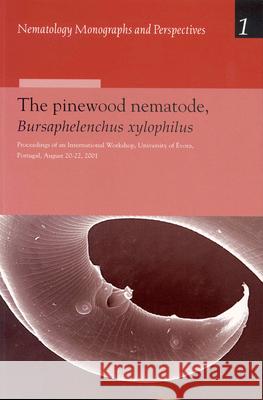The Pinewood Nematode, Bursaphelenchus xylophilus: Proceedings of an International Workshop, University of Évora, Portugal, August 20-22, 2001 » książka
The Pinewood Nematode, Bursaphelenchus xylophilus: Proceedings of an International Workshop, University of Évora, Portugal, August 20-22, 2001
ISBN-13: 9789004132672 / Angielski / Miękka / 2004 / 292 str.
The Pinewood Nematode, Bursaphelenchus xylophilus: Proceedings of an International Workshop, University of Évora, Portugal, August 20-22, 2001
ISBN-13: 9789004132672 / Angielski / Miękka / 2004 / 292 str.
(netto: 482,72 VAT: 5%)
Najniższa cena z 30 dni: 464,27
ok. 30 dni roboczych.
Darmowa dostawa!
According to the European Plant Protection Organization, the pinewood nematode (PWN), Bursaphelenchus xylophilus is a quarantine organism at the top of the list of the pathogenic species. PWN may be found in North America (Canada, USA and Mexico) and in East Asia (Japan, Korea, China and Taiwan) and has a highly destructive capability towards conifers, in a relatively short time, causing serious economic damage in Japan, China and Korea. This nematode surveying is extremely important and a correct identification of nematode species associated with conifers is essential. Several conifers species are very susceptible (Pinus sylvestris, Pinus nigra and Pinus pinaster), the last one (maritime pine) is a particulary important economic specie in Portugal, and in southern Europe. In 1999, this nematode was found and identified for the first time in Portugal and in Europe. During 1999 and 2000, the Portuguese government, following an alert provided to European Community officials initiated an extensive national survey. During 2000 and 2001, research has been carried out regarding the morphobiometric as well as molecular (DNA: ITS-RFLP) characterization of the collected populations, as well as closely related species of Bursaphelenchus. The book details the Proceedings of an international workshop held at the University of Evora in 2001, covering all major aspects of the bioecology of the pinewood nematode (PWN), Bursaphelenchus xylophilus, its insect vectors and effects on the tree. Topics covered are: global issues and national surveys; morphology and molecular methods of identification of PWN; ecology and epidemiology; quarantine issues; tree physiology, resistance and histopathology; biology of PWN and relationships to its cerambycid vectors; control methods. General quarantine and political views are also presented.











